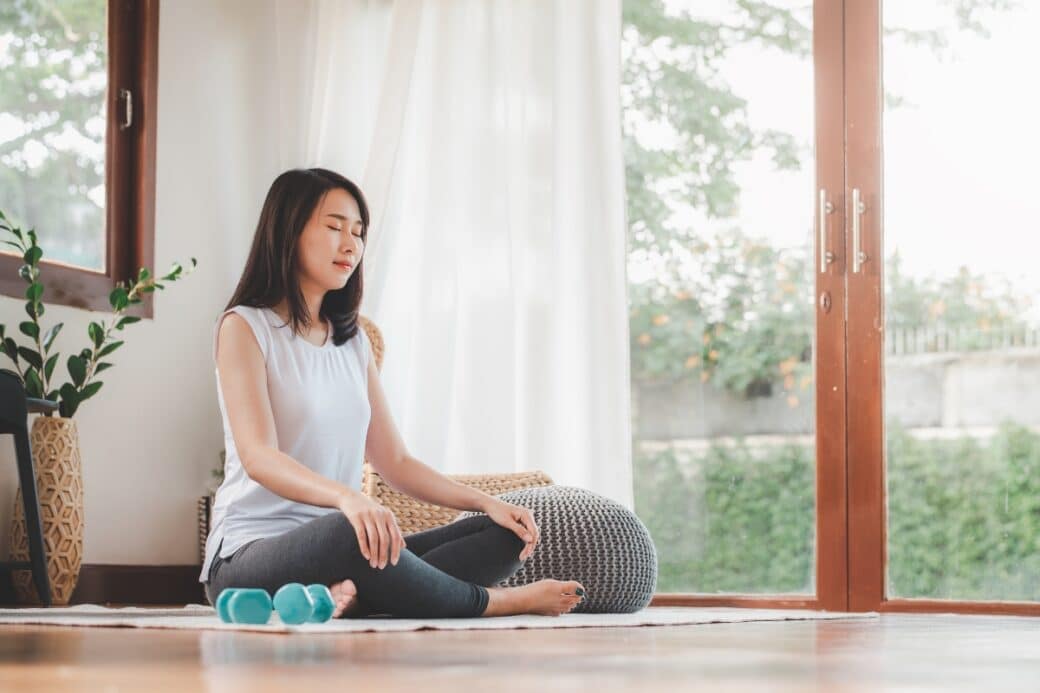Are you struggling to get a restful night’s sleep? Look no further! In this article, we will explore the incredible benefits of Body Scan Meditation for Sleep and how it can enhance your overall restfulness. By guiding your attention through different parts of your body, this technique promotes deep relaxation, eases tension, and helps you drift off into a peaceful slumber. Say goodbye to tossing and turning, and say hello to a rejuvenating night’s sleep with Body Scan Meditation for Sleep!

Understanding Body Scan Meditation
Definition of Body Scan Meditation
Body scan meditation is a mindfulness practice that involves systematically focusing your attention on different parts of your body, from head to toe, with the intention of increasing awareness and relaxation. During this meditation, you mentally scan your body, paying attention to any sensations or areas of tension or discomfort that arise. The goal is to bring a non-judgmental and accepting awareness to your body, promoting a sense of relaxation and overall well-being.
Origins and History of Body Scan Meditation
Body scan meditation has roots in ancient Buddhist traditions, specifically in the practice of vipassana or insight meditation. Vipassana focuses on developing mindful awareness of the body, feelings, thoughts, and mental states. The body scan technique was introduced to Western audiences by Jon Kabat-Zinn, a renowned teacher of mindfulness-based stress reduction (MBSR) in the late 1970s. Since then, it has gained popularity as a standalone practice for promoting mindfulness and relaxation.
Why Body Scan Meditation is Different
What sets body scan meditation apart from other forms of meditation is its specific focus on the physical sensations of the body. While many meditation practices involve directing attention to the breath or a particular object, body scan meditation invites you to explore the body’s sensations and develop a deeper connection with it. This practice cultivates a heightened sense of bodily awareness and promotes relaxation, making it a valuable tool for improving sleep quality.
The Connection Between Meditation and Sleep
The Science Behind Meditation and Sleep
Research has shown that regular meditation practice can have a positive impact on sleep quality. When we engage in meditation, the brain undergoes changes in brainwave patterns, transitioning from the fast-paced beta waves of wakefulness to the slower alpha and theta waves associated with relaxation and sleep. This shift in brainwave activity can lead to a more restful and rejuvenating sleep experience.
How Meditation Affects Sleep Quality
Meditation helps calm the mind and reduce the mental chatter that often keeps us awake at night. By practicing mindfulness and bringing our attention to the present moment, we can let go of worries, anxieties, and racing thoughts that contribute to insomnia or poor sleep quality. Meditation also activates the parasympathetic nervous system, promoting relaxation and helping to induce sleepiness.
Reasons Why Meditation Promotes Good Sleep
There are multiple reasons why meditation promotes good sleep. Firstly, it reduces stress and anxiety, which are common culprits in sleep disturbances. By cultivating a sense of calm and relaxation through regular meditation practice, your mind becomes better equipped to let go of stressors and worries, allowing for more restful sleep. Secondly, meditation helps regulate the circadian rhythm, the internal clock that regulates our sleep-wake cycle. By establishing a consistent meditation routine, you signal to your body and mind when it’s time to wind down and prepare for sleep.

Benefits of Using Body Scan Meditation for Sleep
Improves Sleep Patterns
Body scan meditation can improve sleep patterns by promoting a sense of relaxation before bed. By focusing on the body’s sensations and deliberately bringing awareness to areas of tension or discomfort, you can release physical and mental tension, making it easier to fall asleep and stay asleep throughout the night. This practice trains your mind and body to enter a state of relaxation and calmness, setting the stage for a more consistent sleep pattern.
Decreases Stress and Anxiety
Stress and anxiety are common barriers to a good night’s sleep. Body scan meditation offers a powerful tool for reducing these sleep disruptors. By tuning into the body’s sensations and becoming aware of areas of tension, you can release physical and emotional stressors, allowing for a deeper state of relaxation. Regular practice of body scan meditation can help to reduce anxiety levels, promote a sense of calm, and ultimately improve sleep quality.
Promotes Deep Relaxation
One of the key benefits of body scan meditation is its ability to elicit a deep state of relaxation. As you bring awareness to different parts of your body, you may notice areas of tension or tightness. By directing your attention to those areas and consciously relaxing them, you can promote a profound sense of relaxation throughout your entire body. This deep relaxation prepares your body and mind for sleep, allowing you to let go of any lingering stress or tension.
Improves Awareness of the Body
Body scan meditation cultivates a heightened sense of body awareness. By systematically scanning your body, you become more attuned to the subtle sensations and signals that your body is sending you. This increased awareness can help you identify areas of tension or discomfort that may be contributing to sleep disturbances. By addressing these physical sensations, you can create a more comfortable and conducive environment for sleep.
Enhances Mindfulness
As a form of mindfulness practice, body scan meditation enhances your overall mindfulness skills. Mindfulness involves paying attention to the present moment with an attitude of non-judgmental awareness. By bringing mindful attention to your body during the body scan, you develop the capacity to be fully present and engaged in the present moment. This heightened state of mindfulness can carry over into other areas of your life, promoting a greater sense of calm and well-being.
How to Perform Body Scan Meditation
Choosing the Right Environment
When practicing body scan meditation for sleep, it’s important to choose a quiet and comfortable environment that is conducive to relaxation. Find a space where you won’t be easily disturbed and ensure that the lighting is dim or soft. You may want to create a soothing atmosphere by using candles, essential oils, or calming music. Creating a peaceful environment sets the stage for a more successful body scan meditation practice.
Correct Posture for Body Scan Meditation
To begin your body scan meditation, find a comfortable seated position. You can sit on a cushion or a chair, making sure your back is upright and your spine is aligned. Rest your hands in your lap or on your thighs, whichever feels most comfortable for you. Close your eyes and take a few moments to relax your body and settle into the present moment.
The Process of Body Scan Meditation
Once you are in a comfortable posture, begin the body scan meditation by bringing your attention to your breath. Take a few deep, slow breaths, allowing yourself to fully arrive in the present moment. Then, begin to mentally scan your body from head to toe, paying attention to any sensations or areas of tension that arise. Start with the crown of your head, then move down to your forehead, eyes, cheeks, jaw, and neck. Continue scanning through each part of your body, bringing gentle awareness and relaxation to each area. If you notice any tension or discomfort, simply acknowledge it and breathe into that area, allowing it to release and relax. Take your time with each body part, bringing a sense of curiosity and non-judgment to your experience. Finish the body scan by focusing on your breath and gradually bringing your attention back to the present moment.

Tips for Successful Body Scan Meditation
Maintaining Focus During Meditation
It is natural for your mind to wander during body scan meditation, especially if you are new to the practice. When you notice your mind drifting away, gently guide your attention back to the body and the sensations you are focusing on. Remind yourself that it’s okay to have distractions and that the practice is simply about noticing and returning to the present moment. With time and practice, you will find it easier to maintain focus and concentration during your body scan meditation.
Dealing with Distractions During Meditation
Distractions are a common challenge in any meditation practice. If you find external distractions, such as noises or movements around you, simply acknowledge them without judgment and bring your attention back to the body scan. If you encounter internal distractions, such as thoughts or emotions arising, treat them in the same way. Gently acknowledge their presence and return your focus to the body. Remember that the act of noticing distractions and bringing your focus back is an essential part of the meditation practice.
Incorporating Mindful Breathing
While the body scan meditation primarily focuses on the sensations of the body, incorporating mindful breathing can enhance your practice. As you scan each body part, pay attention to the rhythm and quality of your breath. Notice how your breath naturally flows in and out, without trying to control or change it. This awareness of the breath can help anchor you in the present moment and deepen your state of relaxation.
Advanced Techniques in Body Scan Meditation
Using Visualization Techniques
Adding visualization techniques to your body scan meditation can deepen your experience. As you scan each body part, visualize a warm, soothing light or healing energy flowing through that area, releasing any tension or discomfort. You can also visualize yourself in a peaceful natural setting, such as a tranquil beach or a serene forest. This visualization can enhance relaxation and promote a more profound sense of calm and well-being.
Incorporating Affirmations in Body Scan Meditation
Affirmations are positive statements that can help reframe negative thoughts and promote a sense of self-empowerment. You can integrate affirmations into your body scan meditation by silently repeating positive statements as you scan each body part. For example, as you focus on your neck, you could silently repeat affirmations such as “My neck is relaxed and at ease” or “I release tension and invite relaxation.” Affirmations can help shift your mindset and promote a more positive relationship with your body and sleep.
Integrating Body Scan Meditation in Yoga Practice
Body scan meditation can be a valuable addition to your yoga practice. After completing your physical yoga postures, take a few moments to transition into a seated position and begin your body scan meditation. This integration allows you to deepen your connection with your body and further enhance your relaxation and mindfulness. By incorporating body scan meditation into your yoga practice, you create a holistic experience that nurtures both body and mind.

Common Challenges in Body Scan Meditation and How to Overcome Them
Difficulty in Maintaining Focus
Maintaining focus during body scan meditation can be a challenge, especially when starting. If you find your mind wandering, gently bring your attention back to the body and the sensations you are scanning. You can also try using anchor points, such as your breath or a specific body part, to help anchor your attention and maintain focus. Remember to be patient with yourself and understand that it is a normal part of the practice to have wandering thoughts.
Feeling Sleepy During Meditation
It’s not uncommon to feel sleepy during body scan meditation, especially if you practice it before bedtime. If drowsiness sets in, try sitting up a little straighter, opening your eyes slightly, or focusing on your breath to enhance alertness. You can also try meditating at a different time of day when you are naturally more awake and alert. Experiment with different techniques and find what works best for you to maintain an alert yet relaxed state during body scan meditation.
Physical Discomfort During Meditation
Physical discomfort, such as stiffness or pain, can arise during body scan meditation. It’s important to listen to your body and make any necessary adjustments to find a more comfortable position. You can try using cushions or props to support your body and relieve pressure points. If discomfort persists, it may be helpful to consult with a healthcare professional to address any underlying physical issues.
Inability to Relax During Meditation
If you find it challenging to relax during body scan meditation, it can be helpful to start with shorter sessions and gradually increase the duration as you become more comfortable and experienced. Incorporating relaxation techniques, such as deep breathing or progressive muscle relaxation, before or during the body scan can also promote a greater sense of relaxation. Remember that relaxation is a skill that develops over time with consistent practice, so be patient and gentle with yourself.
How Body Scan Meditation Improves Overall Health
Improves Mental Health
Body scan meditation has numerous benefits for mental health. By bringing awareness to your body and focusing on the present moment, you can cultivate a sense of calm and reduce symptoms of stress, anxiety, and depression. The practice promotes self-compassion and self-acceptance, enhancing overall mental well-being and resilience. Regular body scan meditation can also improve concentration, increase emotional stability, and enhance overall mental clarity.
Helps Manage Chronic Pain
Chronic pain can significantly impact sleep quality and overall well-being. Body scan meditation can be a valuable tool for managing chronic pain by bringing attention and relaxation to areas of discomfort. By developing a non-judgmental awareness of pain sensations, you can change your relationship with the pain and reduce the suffering it causes. This practice helps to calm the nervous system, release tension, and promote a greater sense of ease and acceptance.
Boosts Immune System
Stress and poor sleep can weaken the immune system, making you more susceptible to illnesses. Since body scan meditation reduces stress and promotes better sleep, it indirectly supports a healthy immune system. By engaging in regular body scan meditation, you can cultivate deep relaxation and enhance the body’s natural healing abilities, ultimately boosting your immune system and promoting overall health.
Helps with Weight Management
Poor sleep can disrupt the body’s metabolic processes and contribute to weight gain or difficulty in losing weight. Body scan meditation helps improve sleep quality by promoting relaxation and reducing stress, which can have a positive impact on weight management. By incorporating body scan meditation into your daily routine, you can support healthier sleep patterns, enhance self-awareness around eating habits, and cultivate a more mindful approach to overall well-being.
Scientific Studies on Body Scan Meditation and Sleep
The Impact of Body Scan Meditation on Insomnia
A study published in the Journal of the American Medical Association (JAMA) Internal Medicine found that body scan meditation significantly reduced the severity of insomnia symptoms in individuals suffering from chronic sleep disturbances. The participants who practiced body scan meditation experienced improved sleep quality, reduced time to fall asleep, and decreased nighttime awakenings. These findings suggest that body scan meditation can be an effective intervention for managing insomnia and improving overall sleep hygiene.
Body Scan Meditation and REM Sleep
REM (Rapid Eye Movement) sleep is a crucial stage of the sleep cycle associated with memory consolidation and emotional regulation. A study published in the journal Sleep demonstrated that regular body scan meditation positively influenced REM sleep duration and intensity. The participants who practiced body scan meditation showed an increase in REM sleep, suggesting that this technique can enhance the restorative benefits of sleep, leading to improved cognitive function and emotional well-being.
Changes in Sleep Patterns After Regular Body Scan Meditation
Research conducted at the University of California, San Diego showed that individuals who engaged in body scan meditation for a period of eight weeks experienced significant improvements in their sleep patterns. The participants reported reduced sleep latency, increased sleep efficiency, and decreased wake after sleep onset. These findings highlight the potential of body scan meditation as a non-pharmacological approach to improving sleep quality and addressing sleep-related disorders.
Integrating Body Scan Meditation into Daily Routine
Best Time for Body Scan Meditation
Choosing the best time to practice body scan meditation largely depends on personal preference and lifestyle. Many individuals find it beneficial to incorporate body scan meditation into their evening routine to help unwind and prepare for sleep. By practicing body scan meditation before bedtime, you can release accumulated stress and tension from the day and establish a sense of calm and relaxation essential for a restful night’s sleep. However, you can also practice body scan meditation in the morning or during the day as a way to start the day off with mindfulness and set a positive tone for the hours ahead.
Combining Body Scan Meditation with Other Types of Meditation
While body scan meditation can be a standalone practice, it can also complement and enhance other types of meditation. By combining body scan meditation with other forms of meditation, such as loving-kindness meditation or breath awareness, you can create a more comprehensive and adaptable meditation practice tailored to your needs. Experiment with different combinations and find a rhythm that resonates with you and supports your overall well-being.
Teaching Body Scan Meditation to Children
Body scan meditation can be a valuable tool for children to develop mindfulness skills and improve sleep patterns. Introducing body scan meditation to children can be done in a fun and accessible way. You can start by guiding them through a short body scan meditation before bedtime, encouraging them to bring gentle attention to different parts of their body. Use simple language and make it an interactive experience by asking them to describe any sensations they notice. Teaching children body scan meditation can provide them with lifelong tools for managing stress, promoting relaxation, and nurturing healthy sleep habits.
In conclusion, body scan meditation is a powerful practice that promotes relaxation, mindfulness, and improved sleep quality. By cultivating a non-judgmental awareness of your body and its sensations, you can release tension, reduce stress, and enhance overall well-being. Whether you are a beginner or experienced meditator, incorporating body scan meditation into your daily routine can provide a multitude of benefits for your sleep and overall health. So why not start reaping the benefits of body scan meditation today and experience the restfulness it can bring to your life?




